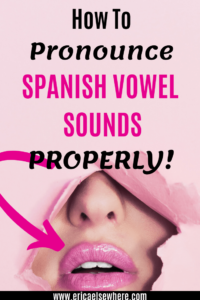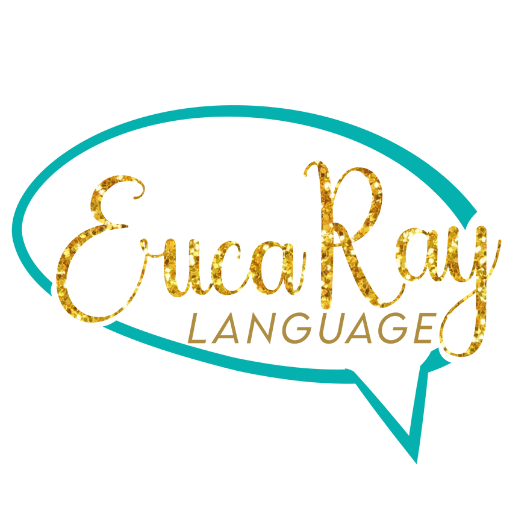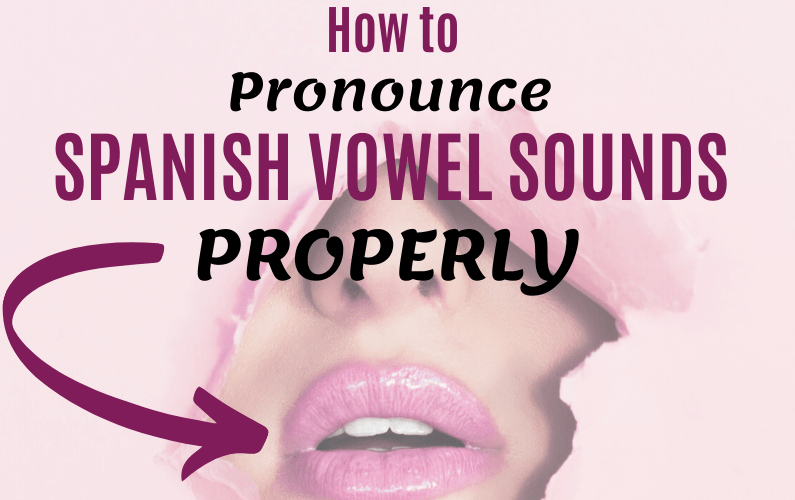Do you want to sound more like a native Spanish-speaker? You may be surprised to know that learning how to pronounce the Spanish vowel sounds properly will get you 80% closer to sounding like a native speaker.
When we think of speaking like a native Spanish-speaker, we tend to think of someone who learned Spanish from childhood. We’re taught that rarely can anyone, after a certain age, achieve a close-to-native accent.
I’m here to tell you that’s false information. And I have dozens of near-native sounding friends to prove it, who all learned at different ages.
What I Learned About Spanish Pronunciation Early On
It was 17 years ago, but the day is so fresh in my mind. I was new to the Spanish language Bible congregation that I had recently joined only about a week prior.
Sure, I had been throwing out some “Como está?” and “Me llamo Erica” phrases here and there, but I lacked the knowledge to say much more than that.
But on this day, I had got up the courage, not only to strike up some small talk, but to attempt my first public comment in front of the 200+ member congregation.
Shaking and nervous I raised my hand to comment. It was 23 words. I said it. I got out my 23 words, and handed the microphone back so fast you’d think it was a hot potato.
After the meeting that day, something strange happened. Everyone…and I mean EVERYONE was complimenting me on my “accent.”
They told me that I sounded like a native speaker. I didn’t actually understand anything that they were telling me. I was pretty much just nodding and smiling because well, it seemed like they were saying something nice to me.
But fortunately, a few bilingual members of the congregation came to my rescue and interpreted for me. Needless to say, I was surprised. My knowledge of Spanish at this point was so limited that it was hard for me to determine why they thought I sounded native and what a non-native would even sound like (yeah, guys, I was seriously that new).
But it wasn’t long before I started to see and hear other Spanish learners around me. Then I began to understand the difference. I wondered why my accent didn’t sound quite so American. After all, some of them had been learning Spanish for YEARS.
As I pondered, I asked myself, “What’s the one thing I’ve been doing so far to learn Spanish?”
You’ll find the answer at the end of this post (or at the end of this video). But the interesting thing is how this particular method of practice unknowingly led me to put pretty heavy emphasis on Spanish letter pronunciation, particularly the pronunciation of Spanish vowels.
So now, take a pause, and learn (or review) the Spanish vowel sounds. Have you really mastered them?
Check out my video below to put yourself to the test.
My Top Two Tips for Pronouncing Spanish Vowels
I have two main tips for getting the pronunciation right every time.
- Remember that Spanish vowels are short, crisp, and precise. There is no need to draw out the vowels, as we tend to do in English. Just say it and get it done! Compare how we say “o” in English, for example “phone” to the Spanish word “oso”. The “o’s” in Spanish are much shorter. You’ll feel a puff of air leave your mouth as you say them, but you won’t with the English “o”.
- Avoid the common mistake of pronouncing the vowels differently depending on where they fall in a word. For example, take the Spanish word “alarma”, the example I used in the video. This cognate, meaning alarm, can trick our brains into wanting to pronounce it as if it were English. But if we start out doing that, we’ll say the uh sound for the first ‘a’ instead of the Spanish “ah” sound. Careful with that!
Practice with these Spanish/English Cognates
In the video, I give you a list of 10 Spanish/English cognates (words that are spelled the same or similar in both languages and have the same meaning) for you to practice with.
Here they are:
- Particular
- Adulto
- Electricidad
- Elemental
- Inspector
- Elefante
- Color
- Debate
- Metal
- Uniforme
I chose cognates because I have seen so often how these words tend to trip people up when they are trying to read in Spanish. Why? Again, because we try to pronounce them as if they were English. So what’s the solution? How, oh, how can we resist the temptation to say these partially in English?
How to MASTER the pronunciation of Spanish vowels
First of all, what’s the difference between learning something and mastering it?
Well, you’ve now learned how to pronounce the vowel sounds properly. You may have already known them.
But, in this case, mastering means that you’re going to develop the ability to use correct pronunciation very naturally in your everyday speech (without having to think about it).
Obviously that’s going to take practice, but what’s the best way to practice?
Reading out loud in Spanish every day.
And not just reading any sort of way.
See, I talked to you earlier about how I asked myself what was the one thing that I was doing differently than the others that had allowed me to develop good pronunciation.
Well, my dad, who was the first of our little family to begin learning Spanish, had taught my mom and me what sounds Spanish letters make, and how, once you learn those sounds, you’re able to sound out any word.
Coming from a language such as English, where there are more exceptions to the phonetic rules than rules themselves, this was fascinating to me! I practiced reading Spanish out loud every day…every day…oftentimes while listening to it as well.
Soon, and when I say soon, I mean within a couple of days, I had picked up on the accent enough to imitate it pretty well. But I didn’t know this until I started receiving the compliments.
Guys, as I mentioned above, Spanish vowel sounds make up 80% of the total sounds that you’re going to produce in Spanish. This means that if you work hard on them, you’re going to be able to READ Spanish so much better, and in turn, you’re going to be so much closer to sounding like a native speaker when you SPEAK.
You can even do a little trick that I use with my 6-year-old when she’s transitioning over from reading something in English to reading something in Spanish.
We put our “Spanish fingers” on our “brains” (the temples) and say the Spanish vowel sounds “a, e, i, o, u.” After a couple of rounds of that, she’s ready to go.
It’s amazing how just briefly reviewing the Spanish vowel sounds themselves helps to transition her entire brain over to reading a whole other language. Wow.
Final takeaway point guys:
Always aim to do your best, but do not fret over perfect pronunciation.
It’s like that quote: “Shoot for the moon, even if you fail, you’ll land among the stars.”
I never did quite get that one since the stars are further away than the moon…but whatever! You get the point.
Do your best, but don’t worry about not being perfect.
I want to help you improve, but I don’t want to discourage you from getting out there and speaking, regardless of what your accent sounds like.
Know that even when we fall short of perfection, we can be perfectly understood by Spanish speakers and have beautiful, meaningful conversations. I’m living proof of that!
What to read next: Why you can learn a language FASTER now than when you were a kid?
Like this? PIN IT and follow me on Pinterest. 🙂


Erica Ray
Latest posts by Erica Ray (see all)
- The Spanish Imperfect Tense (essential for good storytelling!) - February 10, 2025
- Real Spanish Conversation: El Trabajo (Spanish Listening Practice for Intermediate/Advanced) - January 14, 2025
- Por vs Para: The SIMPLEST way to understand and choose between them - January 14, 2025

